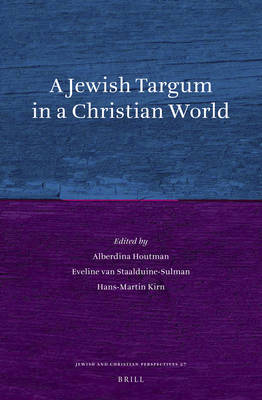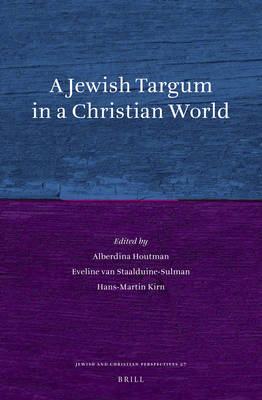
- Afhalen na 1 uur in een winkel met voorraad
- Gratis thuislevering in België vanaf € 30
- Ruim aanbod met 7 miljoen producten
- Afhalen na 1 uur in een winkel met voorraad
- Gratis thuislevering in België vanaf € 30
- Ruim aanbod met 7 miljoen producten
Zoeken
A Jewish Targum in a Christian World
€ 264,45
+ 528 punten
Omschrijving
What is the use of a Targum in a cultural setting where Aramaic is not a common language anymore? And why would Christians be interested in a typically Jewish text in an otherwise anti-Jewish milieu? These and related questions have served as guides for Alberdina Houtman, Eveline van Staalduine-Sulman and Hans-Martin Kirn in bringing together the articles for the present book, which consists of three parts: 1. Uses and Functions of Targum in Europe; 2. Editing Targums and their Latin Translations; 3. Targums and Christianity. A number of the articles deal with the codicological and paratextual aspects of the relevant manuscripts and editions as witnesses of their cultural historical situations. The intended readership includes specialists in Targum, Jewish and medieval studies, (church) historians, codicologists and (Christian) theologians.
Specificaties
Betrokkenen
- Uitgeverij:
Inhoud
- Aantal bladzijden:
- 326
- Taal:
- Engels
- Reeks:
- Reeksnummer:
- nr. 27
Eigenschappen
- Productcode (EAN):
- 9789004267817
- Verschijningsdatum:
- 20/02/2014
- Uitvoering:
- Hardcover
- Formaat:
- Genaaid
- Afmetingen:
- 160 mm x 239 mm
- Gewicht:
- 635 g

Alleen bij Standaard Boekhandel
+ 528 punten op je klantenkaart van Standaard Boekhandel
Beoordelingen
We publiceren alleen reviews die voldoen aan de voorwaarden voor reviews. Bekijk onze voorwaarden voor reviews.







